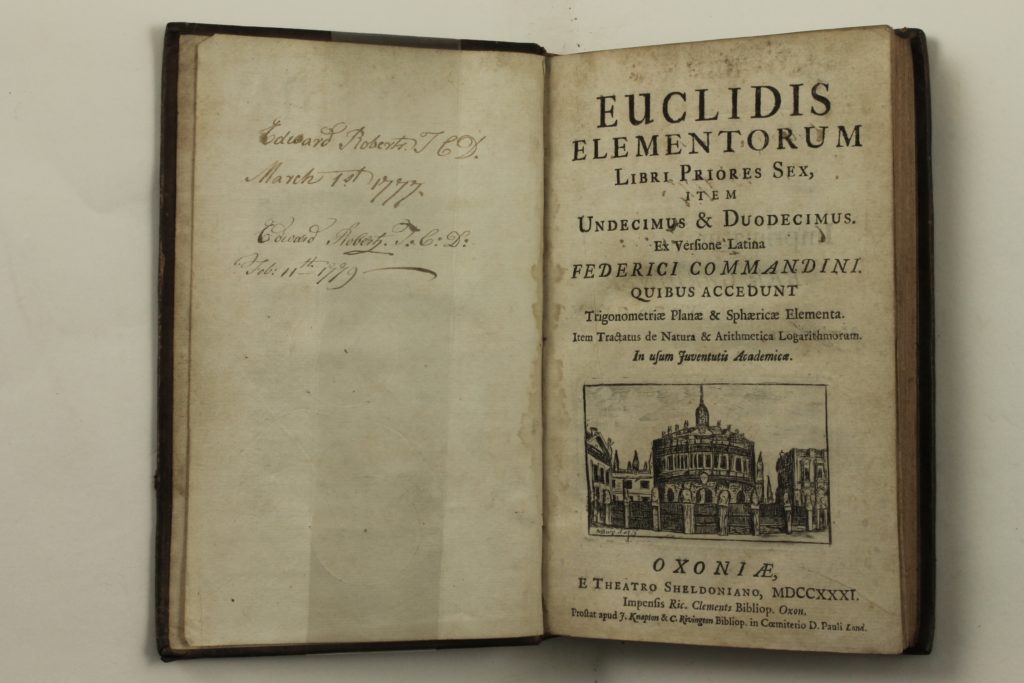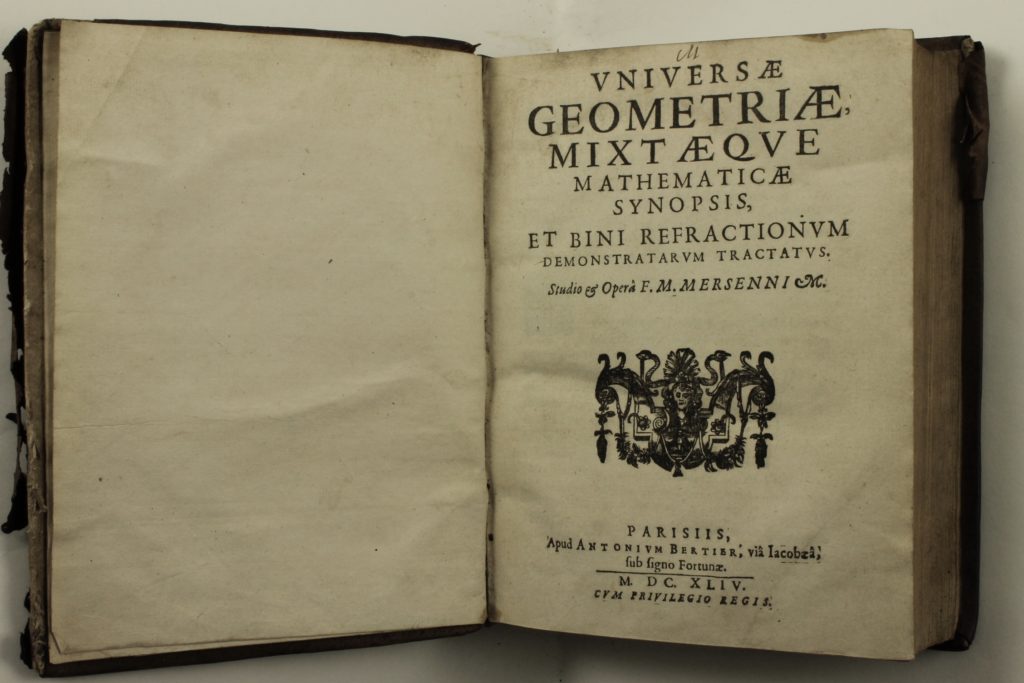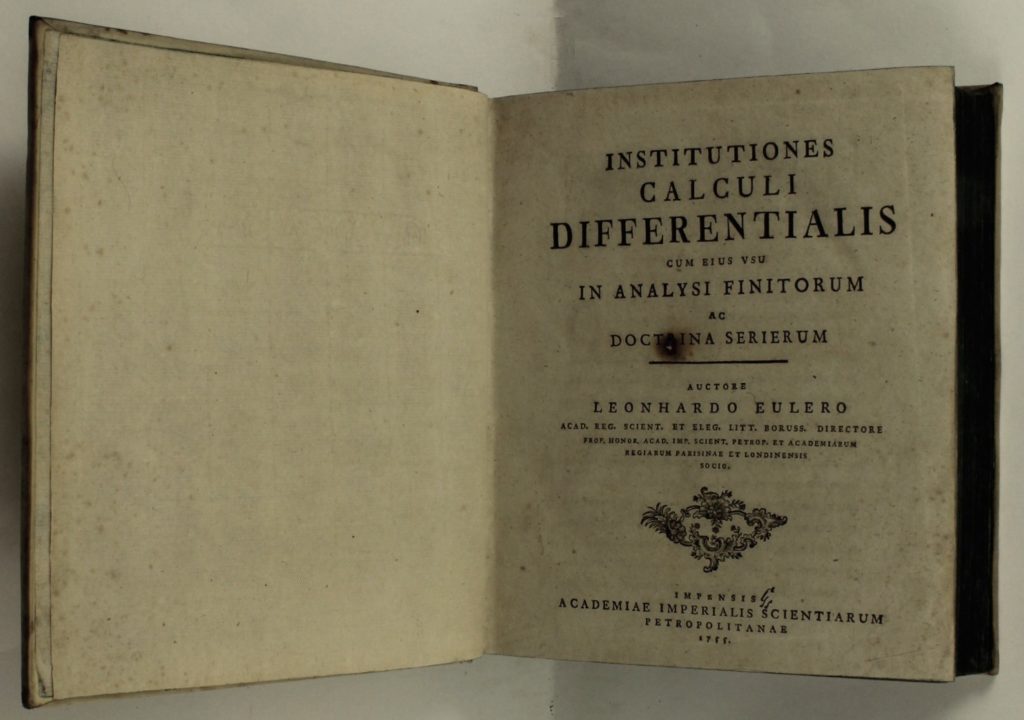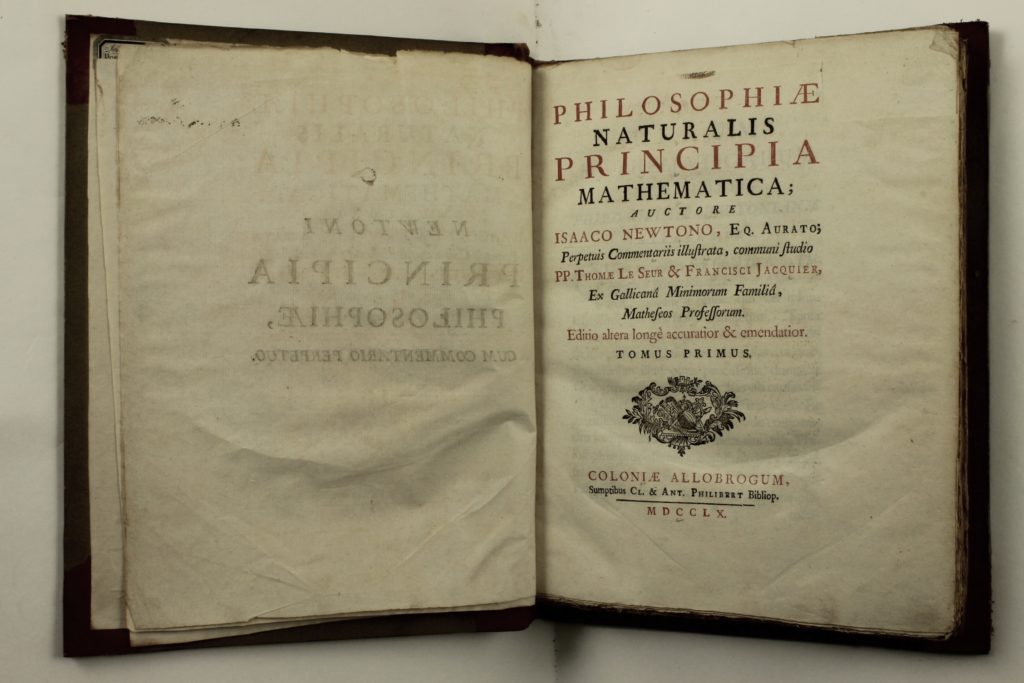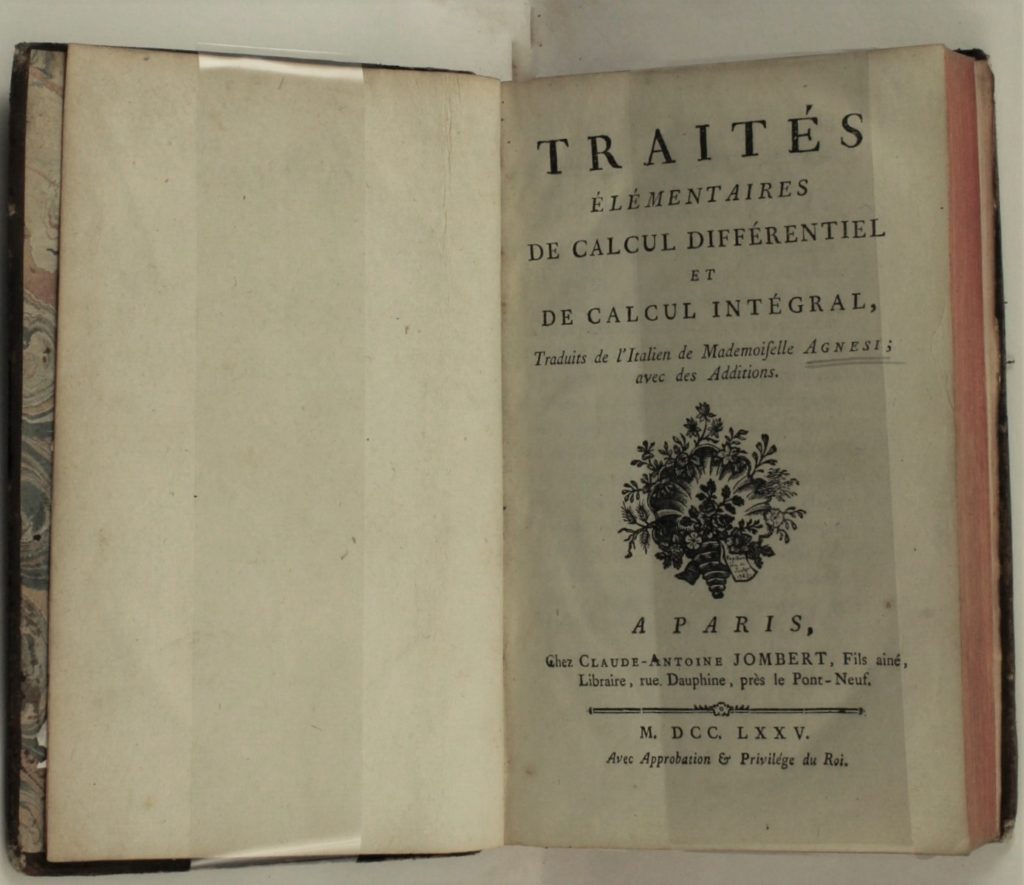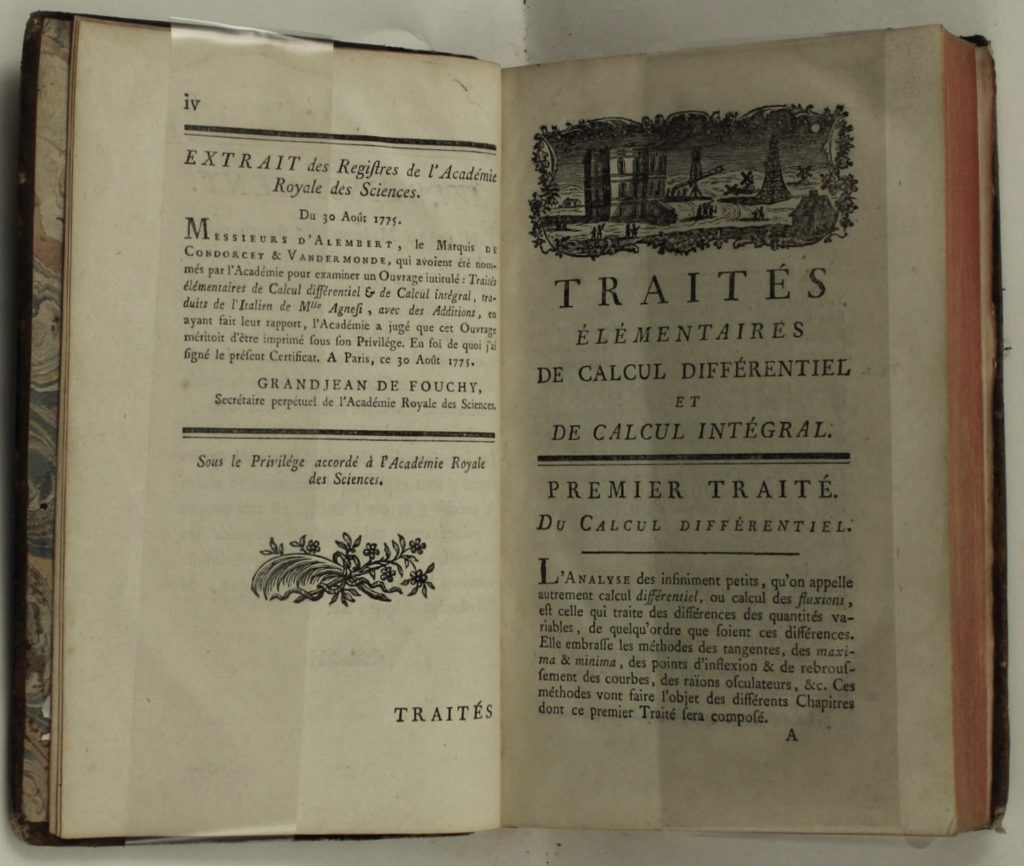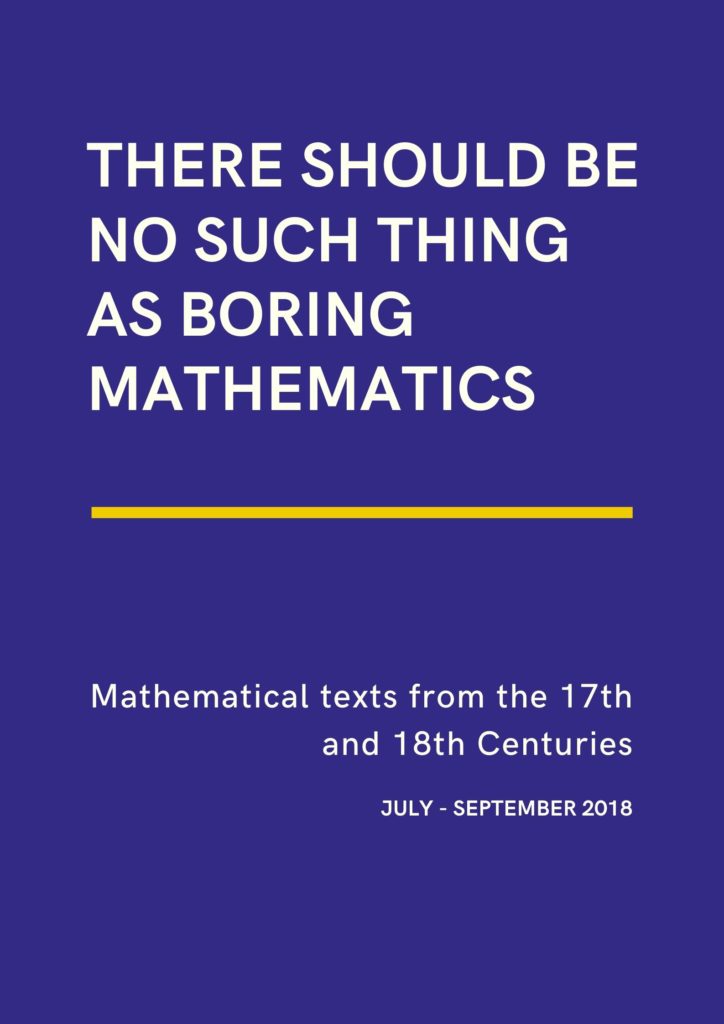
This exhibition highlights some of the Library’s mathematical texts from the 17th and 18th centuries, and coincided with the University of Oxford’s project, Reading Euclid: Euclid’s Elements of Geometry in early modern Britain.
Mathematics, or maths, is the abstract science of number, quantity, and space.The history of maths began in pre- historic times when a simple number scheme was used to count.
Proper mathematics developed when more complex numbering systems of measuring, counting and calculating were needed for agriculture and trade.
This happened across, Mesopotamia, Egypt, Greece, and the Far East from 6,000 BC onwards. By the 12th century, trade had brought mathematical concepts to Europe.
In the 17th and 18th centuries, Europe itself saw a number of revolutionary changes, which in turn formed the basis of an increasingly complex and abstract mathematics.
Elementorum, or, the Elements, by the Greek mathematician Euclid, is one of the most influential works in the history of mathematics. It is a comprehensive and simple compilation and explanation of all the known mathematics of his time.
Euclid reworked existing mathematical concepts to a consistent whole, now known as Euclidean geometry.
It is still valid today and Euclid is often referred to as the ‘father of geometry’. The Elements served as one of the main text books for the study of maths from its original publication in 300 BC, right through to the 19th century.
With the invention of the printing press, it was one of the very earliest printed works on mathematics.
Universae geometriae mixtaeque mathematicae synopsis : et bini refractionum demonstratarum tractatus Marin Mersenne 1644 P0014050501
Universae geometriae mixtaeque mathematicae synopsis by Mersenne, a French polymath, is a compilation of scientific work. Known for his work on prime numbers, he is also valued for posing problems, supplying information, brokering contacts, and for encouraging other writers to publish.
He also edited the works of Euclid and other Greek mathematicians.
Mersenne’s scientific analysis of sound and its effect on the ear and the soul showed that pitch is proportional to frequency, so that musical intervals (fourths, fifths, octaves, and so on) are ratios of frequencies of vibrations.
Guilelmi Oughtred Aetonensis, quondam Collegii Regalis in Guilelmi Oughtred Aetonensis, quondam Collegii Regalis in Cantabrigia Socii, Clavis mathmaticae denuo limata, sive potius fabricate William Oughtred 1652 P001433659
This work describes the level of knowledge of algebra in the 17th century. The text argues for the use of fewer words in favour of more symbols. Its author, William Oughtred, is credited with introducing the “x” symbol into multiplication as well as the abbreviations “sin” and “cos” in trigonometry.
He also used the logarithms invented by John Napier in order to perform direct multiplication and division.
This work, by the Swiss mathematician Jacob Bernoulli, was the first systematic attempt to devise a theory of probability. As such, it is seen as an important historical landmark in the history of the theory of probability.
It discusses the fundamental principles of the calculation of probabilities.
It was the first to suggest that this could be applied to civic, moral and economic as well as mathematical matters.
The Bernoulli family was well known for their various contributions to mathematics. Jacob was also important in the development of calculus.
Institutiones Calculi Differentialis or Foundations of Differential Calculus by the Swiss mathematician Euler contains a complete explanation of the study of the rates at which quantities change.
Euler, who learned his calculus from Jacob Bernoulli, made many influential discoveries in various branches of mathematics. He is widely considered to be one of the greatest mathematicians of all time.
Philosophiae naturalis principia mathematica : auctore Isaaco Newtono, Eq. Aurato ; perpetuis commentariis illustrata, communi studio PP. Thomae Le Seur & Francisci Jacquier, ex Gallicanâ Minimorum Familiâ, Matheseos Professorum. Editio altera longè accuratior & emendatior ... Isaac Newton 1760 P001144118
In his Principia, the English mathematician, astronomer and physicist Isaac Newton, laid the foundations of classical mechanics and formulated the laws of motion and universal gravitation.
The Principia contains definitions and axioms of concepts such as force, momentum and mass, as well as the laws of motion concerning inertia, acceleration, reciprocal action and reaction and universal gravitation.
First published in 1687, this work brought Newton international fame. He is widely recognised as one of the most influential scientists.
Traités Elémentaires De Calcul Differentiel Et De Calcul Integral Maria Agnesi 1775 P001144835
In 1748 Maria Agnesi published Instituzioni Analytiche, ad Uso della Gioventù Italiana, which explained differential and integral calculus to her younger brothers.
This 1775 edition is a French translation of the second volume. It is included in the Registres de l’Académie Royale des Sciences, which was a great privilege.
It also shows how highly regarded this work was throughout Europe.
In 1749 Agnesi was made Honorary Professor of Maths and Natural Philosophy in the University of Bologna. She became only the second woman to hold a university chair in Europe.
Histoire Des Mathématiques by the French mathematician and historian Montucla, was first published in 1758. The first edition covered the history of mathematics from Greek, Roman and Eastern traditions to geometry, mechanics and optics in the 17th century.
The revised and enlarged 1799 edition, here on display contains two further sections, covering mathematics in the 18th century.
The work is described as ‘the first attempt of a history of mathematical ideas and problems.’ A curious characteristic of the work is that Montucla omits using mathematical symbols, which meant many basic aspects of the history of mathematics were omitted.

